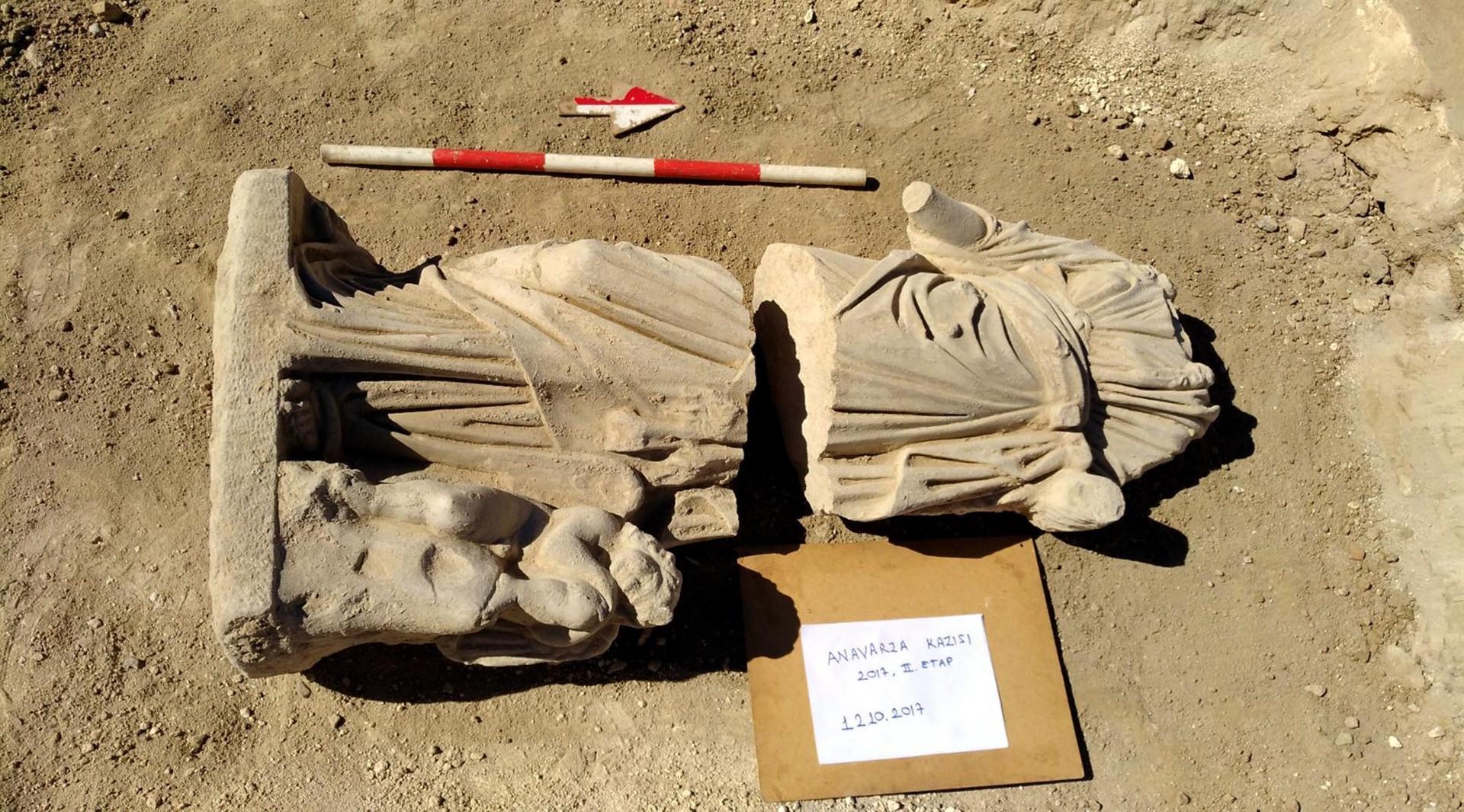
Archaeological excavations in the ancient city of Anavarza, which became one of the most important metropolitans in Anatolia after the second century, have unearthed a headless two-piece statue.
The statue is believed to have belonged to Asclepius, the daughter of the god of health, Dioscorides. Next to the statue is Eros, the god of love.
Located in the southern province of Adana’s Kozan district, the ancient city of Anavarza entered the UNESCO World Heritage Tentative List in 2014. It has traces of the Roman, Byzantine, Sassanian and Ottoman Empires and draws attention for having the first two-lane road in the ancient world and a magnificent entrance gate, theater and walls.
The Adana Museum Director Nedim Dervişoğlu said excavations have been continuing in the region of Cilicia in collaboration with Çukurova University.
Work to restore the 34-meter-long and 2.70-meter-wide two-lane road in the ancient region will start in the coming days, said Dervişoğlu.
The museum director also said the road would be reorganized during the restoration process and the columns would be revived.
“With its two lane-road, castle, walls and three-arched gate, Anavarza has kept its importance since the Hellenistic era. Excavations have been continuing in the area nonstop since 2013. Important artifacts are being unearthed all the time. This year, we unearthed statues of Hygieia and Eros, made of limestone. The statues are believed to date back to the third or fourth century. The headless, two-piece statue of Hygieia is almost 1.68-1.75 meters in length. It is important that the statue was found in Anavarza because Dioscorides, a world renowned pharmacologist who worked in the army in the Roman era and attracted attention for the medicines he made, also lived in Anavarza. We believe the statue belonged to one of his six daughters, Hygieia. Based on this, we can say Anavarza was a city where medicine and pharmacology were improved. The area has also been important for Adana’s health tourism,” he said.
Dervişoğlu said work to preserve the statue has been continuing and they hope to find the head of the statue in further excavations.
The academic consultant for the excavations, Çukurova University Archaeology Department member Fatih Gülşen, said the purpose of the excavations was to gain tourism in Anavarza. He said the city, which has traces of many civilizations from the Hellenistic era to the Roman and Byzantine eras, was ranked as a “neokoros” and later as a metropolitan. It was one of the most important cities in Cilicia.
Gülşen said the ancient city was made up of two parts, upper and lower, and there was a wall along every 70 meters of the upper part of the city, but one of the most striking structures in the lower part was the triumphal arch.
“The biggest and only two-lane street in the ancient world has been found here. There are columns along every two meters the road. The city has 7,000 columns. This road will be restored and the columns will be revived. There are also two squares on the road. The ancient city has an amphitheater, used for wild animal fights. We have not started excavations in the amphitheater yet,” he said.
The ancient city’s 22.5-meter-wide three-arched gate had been made in memory of an important event, said Gülşen. “The statue has been found during the latest excavations in the north side of the gate. At the foot of the statue is Eros, wearing a toga. They are continuing to study the statue,” he said.